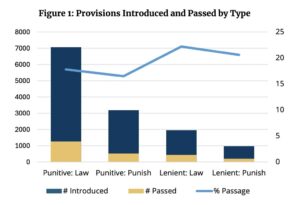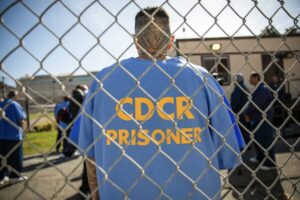There are lots of interesting cases involving animal welfare, animal rights, and the complicated terrain of animal personhood. But what is unique to the criminal process is that at the center of the proceeding is a human defendant facing a possible incarceration sentence. An interesting aspect of this project involves the way activists perceive, and make meaning, of this prospect, and one possible way to think about this is to rely on Idit Kostiner’s typology of legal mobilization schemas.
Kostiner, who interviewed social justice activists, found that they related to what the law could do for their movement in three primary ways: instrumentally (whether they might “win” their rights through an effort to legislate or through impact litigation), politically (whether the very effort of participating in a mobilization project will bring the movement together, give it a political direction, galvanize it), and culturally (whether constructing the struggle in a rights perspective offers avenues of change in thought and perception.) While Kostiner found evidence of all three schemas in her interviews, she also hypothesized that there’s a progression from one to the other – that people move from the instrumental to the political to the cultural.
I found Kostiner’s work helpful in 2004, when I started working on the opposite question: why the polyamorous community in the Bay Area was not mobilizing for legal recognition of nonmonogamous relationships. Like Kostiner, my interviewees were influenced by considerations belonging in the three schemas. The instrumental perspective was served by the fact that many activists had found other ways to secure their rights, such as contracts, power of attorney documents, wills and trusts, and others found that keeping their relationships under the legal radar served them well in terms of rights. Politically, some of my interviewees were averse to the notion of damaging the LGBT marriage equality struggle, which was nascent at the time, by association, and wanted to give their gay and lesbian brothers and sisters their moment in the sun (my later work with Gwendolyn Leachman showed the wisdom of this approach, as well as how poorly it paid off for the poly activists later.) And culturally, many interviewees were averse to the idea that they would have to appeal to the mainstream, to be digested into “normality”, to appear bourgeois, to eschew their interests in sacred sexuality and BDSM, all of which seemed too dear a price to pay for legal recognition.
Studying animal rights activists using the same framework is useful in the sense that the three schemas can reflect attitudes toward a prospective conviction and jail time. Instrumentally, activists may work toward an acquittal in the hopes of preventing conviction and incarceration. Such a victory, whether through a jury acquittal or through an appellate reversal, would be a double win: for the human defendant, who won’t be going to prison, and for the nonhuman animals, if the win will be interpreted as some legal recognition of the value and moral weight of animal suffering (if not an acceptance of a weak or strong theory of animal personhood.)
But short of such an instrumental win, the prospect of incarceration could carry some important political implication. A normative, principled, ideological young person behind bars is a powerful motivator for movements to unite. There are some serious fractures within the animal rights movement, not only regarding strategies and action but also regarding activist styles, dispute resolution, and questions of intersectionality that have arisen in a variety of progressive movements and communities in the last few years. Some of these may heal in the face of a person unjustly incarcerated for bringing animal cruelty to light.
Incarceration also has a powerful cultural symbolism. It creates an important analogy between the animals, for whose conditions incarceration might be even regarded a euphemism, and their human protectors, now behind bars. In my years of studying and advocating about prison conditions, I’ve often heard the conditions described as “like animals.” Since here, helping animals is the point, there is something very powerful about analogizing incarceration. There is also a sense of cultural continuity with other movements for civil rights, particularly with incarcerated nonviolent activists fighting for compassion and equality. This is particularly important for movements building their action program around concept of Kingian nonviolent resistance.
There’s plenty more to say, but this should give you an idea of the project – and now, I’ll get to work!




No comment yet, add your voice below!